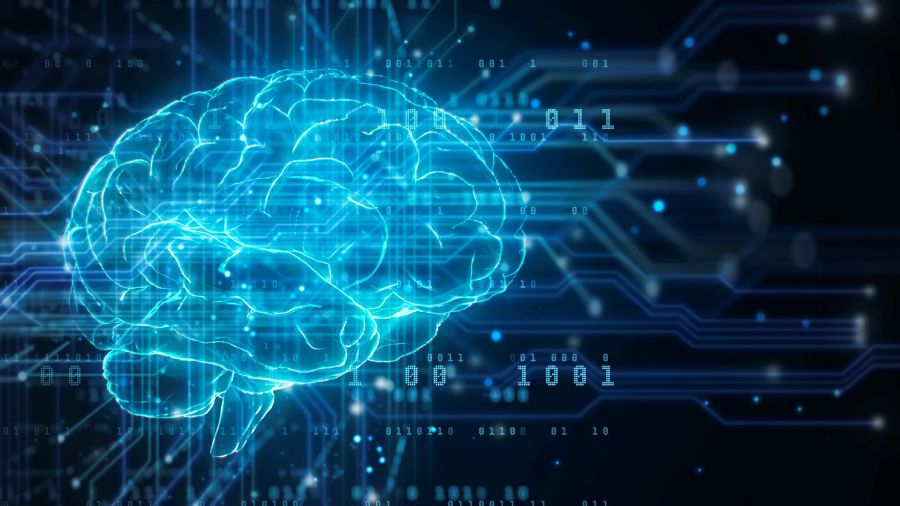
Brain Plasticity and Brain – Computer Interface
The human brain is one of the most complex and remarkable structures in the known universe. It contains approximately 100 billion neurons and trillions of connections, all working together to create our thoughts, feelings, and behaviors. One of the brain’s most remarkable features is its ability to change and adapt in response to various experiences and stimuli. This process is called brain plasticity or neuroplasticity.
Brain plasticity is the brain’s ability to change and adapt in response to experiences and stimuli. This remarkable capacity allows the brain to learn new skills, form memories, and recover from injuries. For example, if you start learning a new skill, such as playing a musical instrument or a new language, your brain will create new connections between neurons. As you continue to practice, these connections will become stronger, making it easier for you to perform the task. Similarly, if you suffer a stroke that damages a particular area of your brain responsible for movement, your brain can rewire itself to use other areas to compensate for the loss of function.
Brain plasticity is not limited to recovery from injury, but can also be harnessed to improve cognitive function. Research has shown that engaging in mentally stimulating activities, such as learning a new language, playing a musical instrument, or doing crossword puzzles, can enhance brain plasticity and improve cognitive function in older adults.
One of the most exciting developments in the field of brain plasticity and neurology is the emergence of brain-computer interfaces (BCIs). BCIs are devices that enable direct communication between the brain and a computer or other electronic device. They work by detecting and interpreting signals from the brain, usually through electrodes placed on the scalp or implanted directly into the brain.
BCIs can be used to assist individuals with disabilities or injuries that affect their ability to control their movements, such as spinal cord injuries or paralysis. For example, a person with paralysis may be able to use a BCI to control a robotic arm, allowing them to perform tasks they would otherwise be unable to do. BCIs can also be used to treat a wide range of neurological and psychiatric conditions, including depression, anxiety, and addiction.
The development and use of BCIs rely heavily on brain plasticity. When using a BCI, the brain must learn to adapt to new patterns of neural activity in order to control the device. This requires changes in the way the brain processes information and communicates with other parts of the body. With training and practice, the brain can become more efficient at controlling the BCI, leading to better accuracy and faster response times.
In addition, BCIs themselves can contribute to brain plasticity. By providing new ways for the brain to interact with the external world, BCIs can stimulate the growth of new neural connections and enhance existing ones. This can have positive effects on brain function and may even lead to improvements in cognitive abilities.
One example of the use of BCIs for neurorehabilitation is the BrainGate system, developed by a team of researchers at Brown University. The BrainGate system uses a small sensor, about the size of a baby aspirin, implanted in the motor cortex of the brain to detect the activity of neurons. The system then translates this activity into commands that can control a robotic arm, a computer cursor, or other devices.
The BrainGate system has been used to restore some degree of independence to individuals with paralysis or other motor impairments. For example, a person with quadriplegia, unable to move or speak, was able to use the BrainGate system to control a computer cursor, write emails, and even play video games. The BrainGate system is still in the experimental stages, but it holds great promise for improving the lives of individuals with disabilities or injuries.
Another example of the use of BCIs for neurorehabilitation is the Walk Again Project, a collaborative effort between researchers and engineers from various institutions around the world. The Walk Again Project focuses on developing technologies to help individuals with spinal cord injuries regain the ability to walk.
One of the key components of the Walk Again Project is a BCI that allows the user to control a robotic exoskeleton with their thoughts. The BCI works by detecting the activity of neurons in the user’s brain, which are then translated into commands that control the movement of the exoskeleton. With practice and training, the user can learn to control the exoskeleton and take steps on their own.
The Walk Again Project has already achieved some remarkable successes. In 2014, during the opening ceremony of the FIFA World Cup in Brazil, a young man with a spinal cord injury was able to take the first kick of the tournament using the Walk Again Project’s BCI-controlled exoskeleton. The project is still ongoing, with researchers working to refine the technology and make it more accessible to individuals with spinal cord injuries.
While BCIs hold great promise for improving the lives of individuals with disabilities or injuries, they also raise a number of ethical and practical questions. One concern is the potential for BCIs to be used for non-medical purposes, such as enhancing cognitive function or controlling the behavior of others. There are also concerns about the privacy and security of the data collected by BCIs, as well as the potential for hacking or misuse.
Another challenge is the variability in individual responses to BCIs. While some individuals are able to quickly and effectively learn to control a BCI, others may have more difficulty or may not be able to use the technology at all. This highlights the importance of individualized approaches to BCI training and rehabilitation.
Despite these challenges, the field of brain-computer interfaces holds great promise for improving the lives of individuals with disabilities or injuries. As our understanding of brain plasticity and the capabilities of BCIs continue to expand, we can expect to see even more remarkable developments in the years to come.
In conclusion, brain plasticity is a remarkable feature of the human brain that allows it to change and adapt in response to various experiences and stimuli. This capacity has significant implications for our ability to learn, recover from injuries, and improve cognitive function. Brain-computer interfaces, or BCIs, are devices that enable direct communication between the brain and a computer or other electronic device. BCIs rely heavily on brain plasticity, as the brain must learn to adapt to new patterns of neural activity in order to control the device. With training and practice, the brain can become more efficient at controlling the BCI, leading to better accuracy and faster response times. The development and use of BCIs hold great promise for improving the lives of individuals with disabilities or injuries, and the field is likely to see even more remarkable developments in the years to come.






